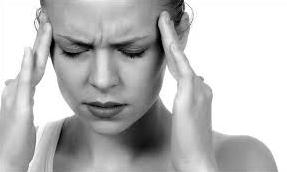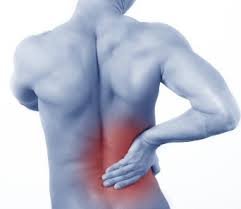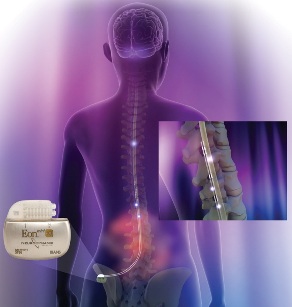Services
MIGRAINE
A migraine is a severe, painful headache that is often preceded or accompanied by sensory warning signs such as flashes of light, blind spots, tingling in the arms and legs, nausea, vomiting, and increased sensitivity to light and sound. The excruciating pain that migraines bring can last for hours or even days.

Common migraine triggers include:
- Hormonal changes in women. Fluctuations in estrogen seem to trigger headaches in many women with known migraines.
- Foods. Aged cheeses, salty foods and processed foods may trigger migraines.
- Food additives.
- Drinks.
- Stress.
- Sensory stimuli.
- Changes in wake-sleep pattern.
- Physical factors.
At the first sign of a migraine, retreat from your usual activities if possible.
- Turn off the lights. Migraines often increase sensitivity to light and sound. Relax in a dark, quiet room. Sleep if you can.
- Try temperature therapy. Apply hot or cold compresses to your head or neck. Ice packs have a numbing effect, which may dull the sensation of pain. Hot packs and heating pads can relax tense muscles; warm showers or baths may have a similar effect.
- Massage painful areas. Apply gentle pressure to your scalp or temples. Alleviate muscle tension with a shoulder or neck massage.
- Drink a caffeinated beverage. In small amounts, caffeine alone can relieve migraine pain in the early stages or enhance the pain-reducing effects of acetaminophen (Tylenol, others) and aspirin. Be careful, however. Drinking too much caffeine too often can lead to withdrawal headaches later on.
Sleep well
At the first sign of a migraine, retreat from your usual activities if possible.
- Establish regular sleep hours. Wake up and go to bed at the same time every day - even on weekends. If you nap during the day, keep it short. Naps longer than 20 to 30 minutes may interfere with nighttime sleep.
- Unwind at the end of the day. Anything that helps you relax can promote better sleep: Listen to soothing music, soak in a warm bath or read a favorite book. But watch what you eat and drink before bedtime. Intense exercise, heavy meals, caffeine, nicotine and alcohol can interfere with sleep.
- Minimize distractions. Save your bedroom for sleep and intimacy. Don't watch television or take work materials to bed. Close your bedroom door. Use a fan to muffle distracting noises.
- Don't try to sleep. The harder you try to sleep, the more awake you'll feel. If you can't fall asleep, read or do another quiet activity until you become drowsy.
- Check your medications. Medications that contain caffeine or other stimulants - including some medications to treat migraines - may interfere with sleep.
Exercise regularly
During physical activity, your body releases certain chemicals that block pain signals to your brain. These chemicals also help alleviate anxiety and depression, which can make migraines worse. If your doctor agrees, choose any exercise you enjoy. Walking, swimming and cycling are often good choices. But it's important to start slowly. Exercising too vigorously can trigger migraines.
BACK ACHE RELIEF
Backpain - Acute or Chronic - is an all-too-common problem which makes your life a misery. we are fellow sufferers so we do understand what you are going through. Unfortunately, it is a problem which will affect most people at some point in their lives.
Backache or back pain are really two names for the same problem, anything from a sudden, sharp pain that can have you incapacitated, to a dull, constant ache which just wears you out.

Unfortunately, most people will suffer at some time - it is so common that it is the principal reason in the developed world why people need to take time off work.
It can be the result of an accident, a fall, or lifting something too heavy or it can develop slowly, perhaps as your spine changes with increasing age. Sometimes, there is no obvious reason.
Regardless of how it happens or how intense the pain, you know when you have it. And chances are, if you don't have it now, you will eventually. As fellow sufferers we know how best to deal it and we created this Backache-Relief site to help you with immediate relief now and just as importantly, suggest ways which will help prevent more painful problems occurring in the future.
If this describes you:-
- You can't get comfortable
- You can't concentrate because of the pain
- You can't sleep at night
- You need help but don't know what to do.
We can help. There are no magical cures for backache and back pain. But what we can do is offer quick relief. Often that is all that is needed and your own natural body mechanism can then continue the healing process.
CANCER PAIN MANAGEMENT
Pain in cancer may arise from a tumor compressing or infiltrating nearby body parts; from treatments and diagnostic procedures; or from skin, nerve and other changes caused by a hormone imbalance or immune response.

ABDOMINAL CANCER PAIN
The abdomen is the part of the body located between the chest and the pelvis. Most people refer to it loosely at the stomach (although the stomach is an organ within the abdomen). Pain is a personal experience of discomfort. Abdominal pain can be associated with a variety of conditions both within and outside or the abdomen. Abdominal or lower abdominal pain can be a dull ache, cramping, or sharp pain. Dull aches and cramping are not uncommonly associated with some chemotherapy drugs. Sharp pain that does not resolve in a few minutes may be an indicator of a more serious problem.
Cancer treatment-induced abdominal pain, cramping and flatulence (gas):
- Chemotherapy can cause both increased (rapid) and decreased (slow) motility of the intestines. In other words, the normal wave-like action that moves stool through the bowel may be faster or slower than usual.
- Rapid motility may cause stool to travel faster and be less formed. Rapid motility can be associated with cramping and/or diarrhea.
- Slow motility may cause stool to travel slower, becoming harder and dryer and more difficult to pass. It may contribute to constipation. Pain may be achy or cramp-like and may be associated with increased flatulence (gas).
- Chemotherapy may also alter the normal bacterial flora that is present in the intestines. This can affect digestion and cause abdominal pain, cramping or flatulence (gas).
- Steroids and other immunosuppressive medications may increase the probability of ulcers or other potentially serious abdominal complications such as perforation.
- A history of or the development of lactose intolerance may contribute to worsening abdominal pain, cramping or flatulence (gas).
- Cramping is a caused by a spasm (or contraction) of the bowel. It may be associated with the urge to move your bowels. It is not usually constant but comes more in "waves". It may be accompanied by either diarrhea, constipation or flatulence (gas).
Stomach cancer often does not have symptoms in the early stages, or they can be vague and non-specific -- such as nausea or weight loss. Also, there is no single symptom that exactly pinpoints stomach cancer; therefore, further evaluation and testing is required for a diagnosis.
Symptoms vary and depend on how advanced the disease and what type of gastric cancer they have. If you are experiencing the symptoms of stomach cancer, please see your doctor. With most diseases, a timely diagnosis leads to a better treatment outcome.
Abdominal pain is one of the most common stomach cancer symptoms and is usually what prompts people to seek medical attention. Abdominal pain can range from persistent mild discomfort to severe pain. Pain and discomfort generally occurs in the upper abdomen area. Persistent abdominal pain, regardless of where it occurs, needs to be evaluated by your doctor.
CHRONIC PAIN OF LIMBS
What is Phantom Limb Pain?
After a limb is removed, you may continue to feel it, as though it were still there. Phantom limb pain is not the same thing as stump pain, which is felt in and around the incision following surgery. Stump pain is localized to the amputation site, while phantom pain is felt in some part of the leg that is no longer attached.

Many people describe burning sensations in their toes though they may be missing their entire leg below the knee. This can be a confusing and even scary sensation, leading some people to believe that they are losing their minds. How can you feel pain in a limb that no longer exists?
Theories About Phantom Pain
No one knows for sure why amputees have phantom pain, but a few possible explanations are widely believed to be true.
Memory of limb pain - some researchers theorize that after a limb is damaged beyond repair, the brain is "used to" feeling the pain. Even after the limb has been removed, the brain continues to sense the same kind of pain. It is like having a memory of the pain because the pain is wired into the brain.
Nerve bundle stimulation - the severed nerves around the amputation site either misfire or are stimulated in some way, sending a pain message to the brain. These are the same nerves that used to reach all the way into the limb. Sometimes following surgery, these nerves form bundles called neuromas. When they fire, the brain interprets these signals as if the nerve were still intact, and "feels" pain in the toes.
Rewiring of the nervous system - there has been evidence that when a limb is amputated, changes take place in the brain and spinal cord that cause pain to be interpreted differently than before. It is not yet clear, however, if this is a cause of phantom pain or if this happens as a result of it.
Symptoms of Phantom Limb Pain
Regardless of its cause, phantom pain can be a debilitating condition. Pain is often described as burning, stabbing and throbbing -- typical descriptor words for neuropathic pain. Phantom pain may happen in a continuous cycle, or it may be brought on by outside factors such as temperature change, stress or stump irritation.
Most people describe their phantom pain as if it were coming from the distal parts of the amputated limb. In other words, feet, toes or hands. Phantom sensations are more common in the first few months after surgery than they are several months down the road, but they can happen at any time after an amputation. So how do you treat pain that isn't there?
Treatment for Phantom Pain
Like most chronic pain conditions, no single treatment approach works for everybody. A number of medications complementary and alternative treatments out there work for phantom pain. Here are some of the most common approaches.
Medication - because it is considered a neuropathic disorder, antidepressants and anticonvulsants are often prescribed for phantom pain. NSAIDSs, opioids and muscle relaxants are also on the list of medications. As with other chronic pain conditions, finding the right medication can take time and patience. Sometimes successful phantom pain relief takes a combination of these medications.
Mirror therapy - many therapists use mirrors in their treatments to show the brain into a healthy limb in place of a stump. This usually involves placing both limbs in a mirror box, which makes the amputated limb appear intact. The individual is then asked to perform exercises with "both" limbs. This tricks the brain, and effectively reduces phantom pain for some people.
Stump stimulation - using TENS, applying pain-relief patches or rubbing the stump can relieve phantom pain in some people. Using hot packs and cold packs can work for some people. Providing an alternate sensation from the stump can interrupt pain signals.
Cognitive therapies - some people find relief from their phantom pain through hypnosis, relaxation or guided imagery. These approaches can change the way the brain interprets phantom sensations, including phantom pain.
Usually more than one treatment approach is used to get phantom pain under control. Some people, however, may require more invasive forms of treatment. These include additional surgery to untangle nerve bundles at the amputation site, stimulation of the spinal cord or the brain to change the way pain is interpreted and implantation of pain pumps that deliver medications directly to the spinal cord.







